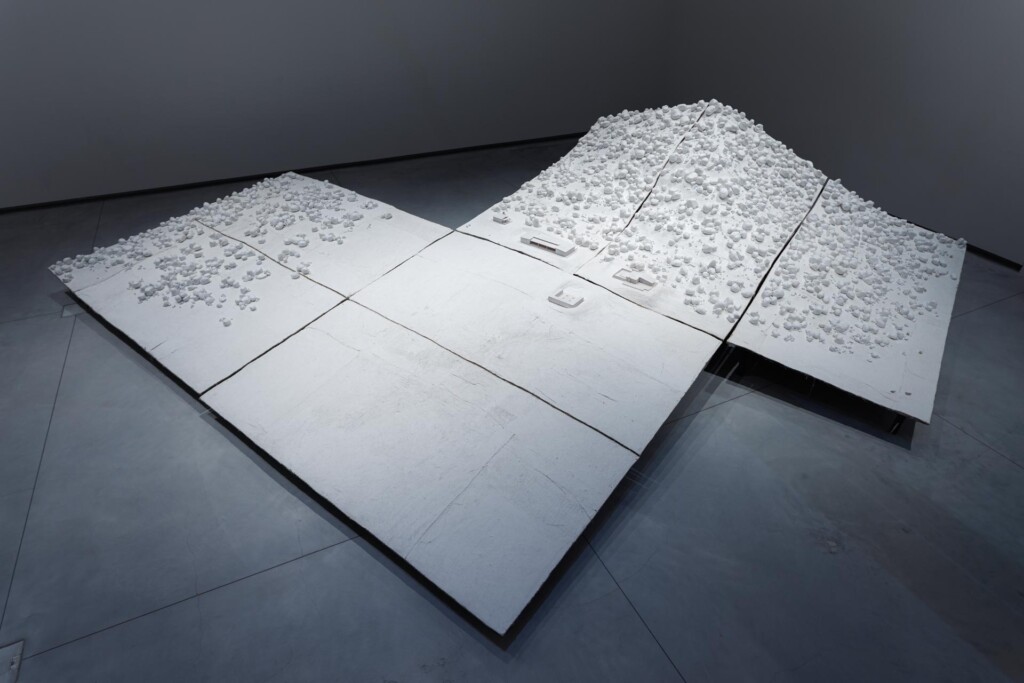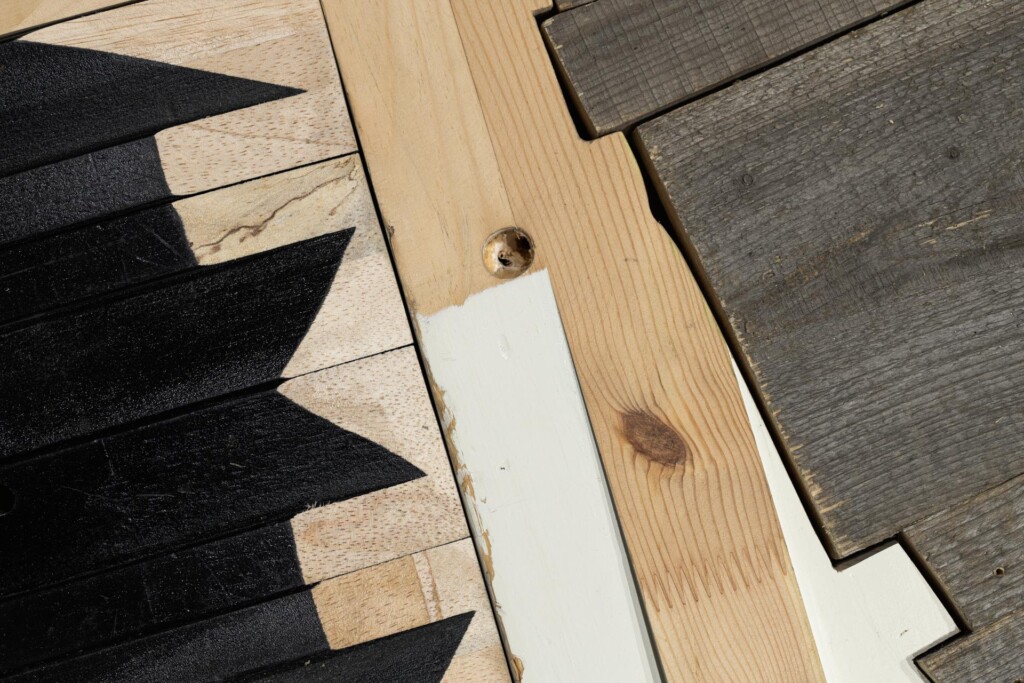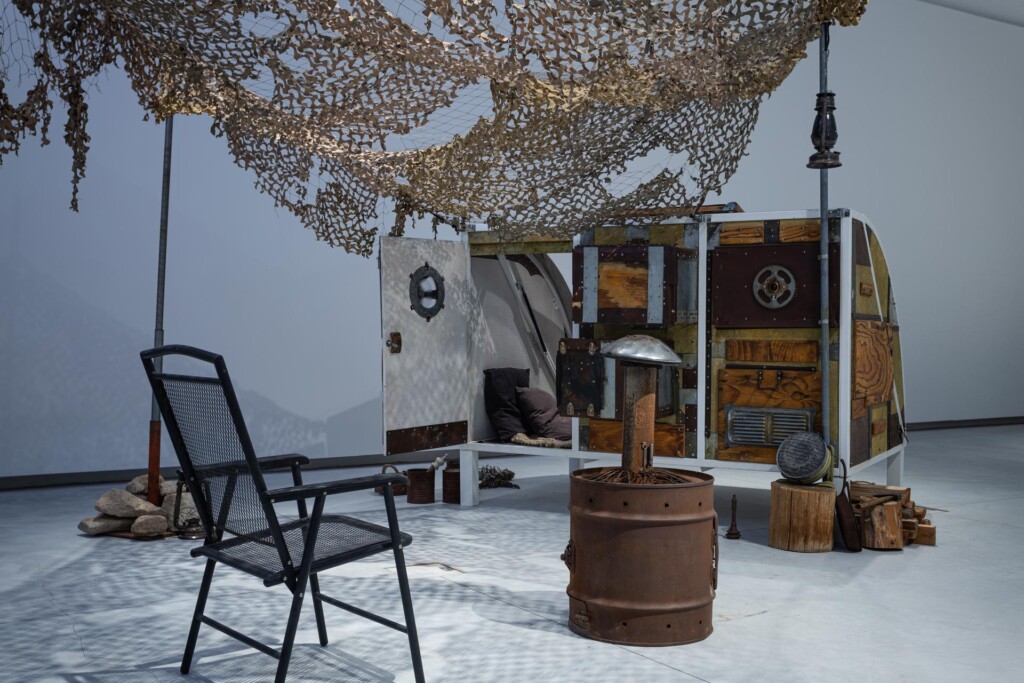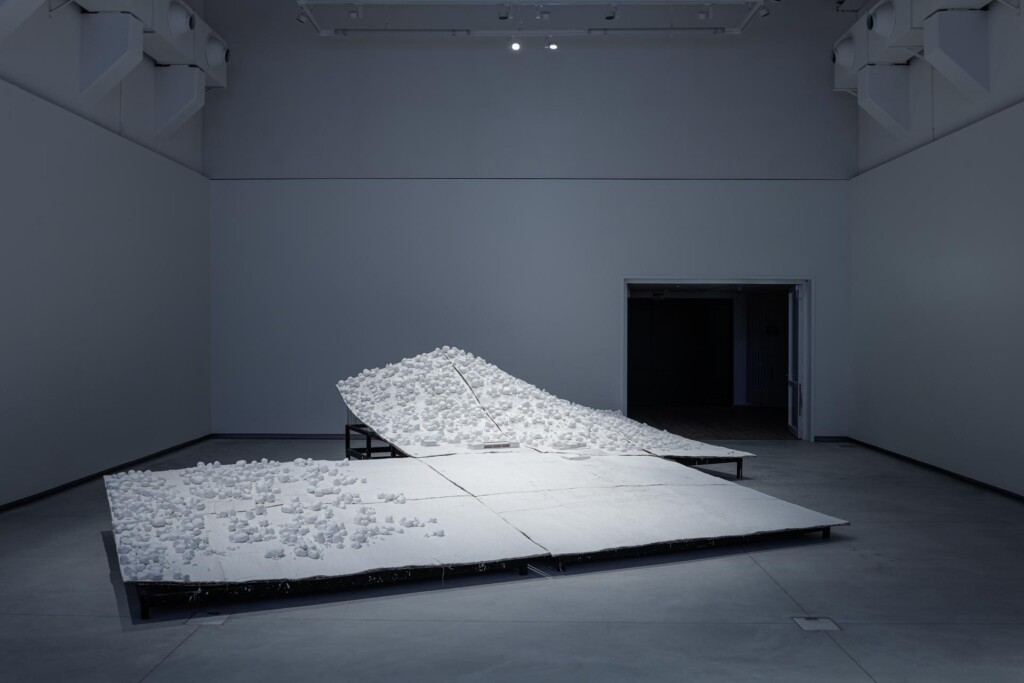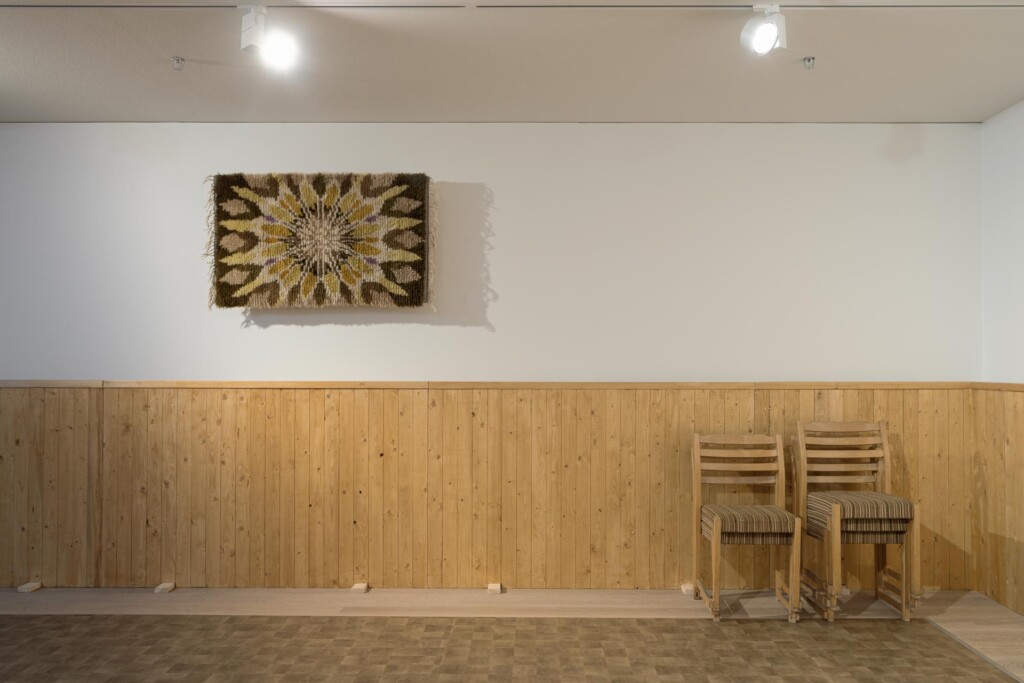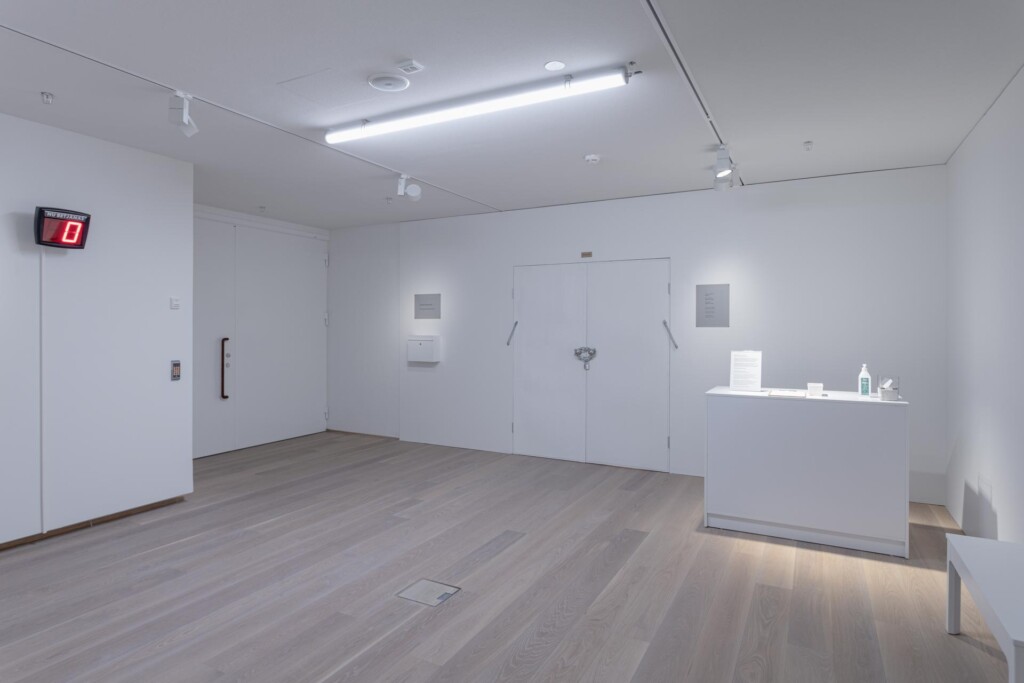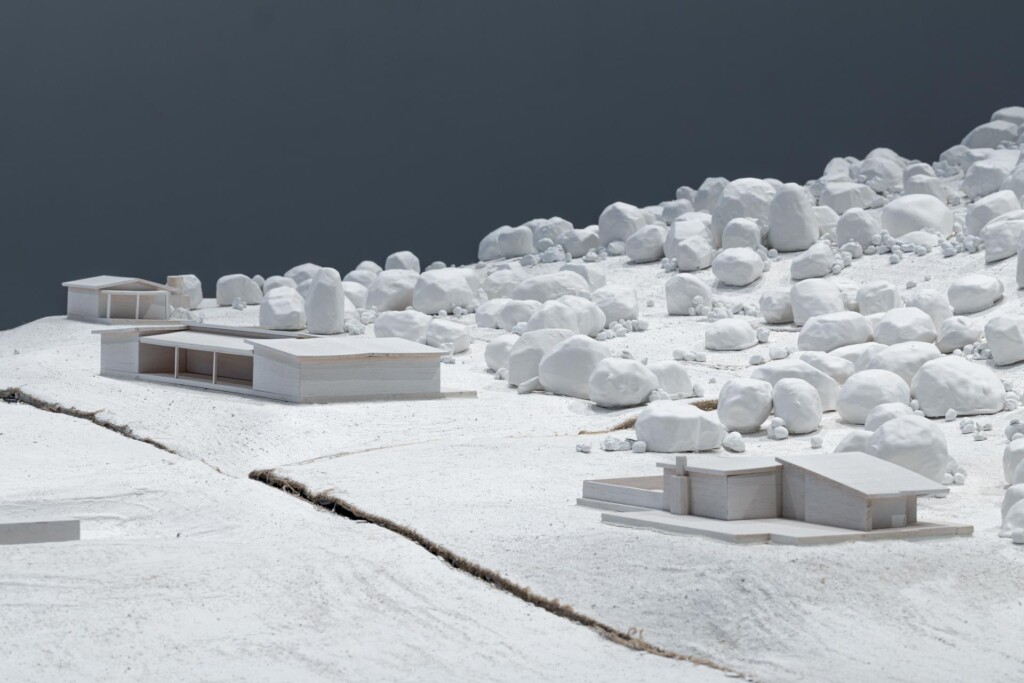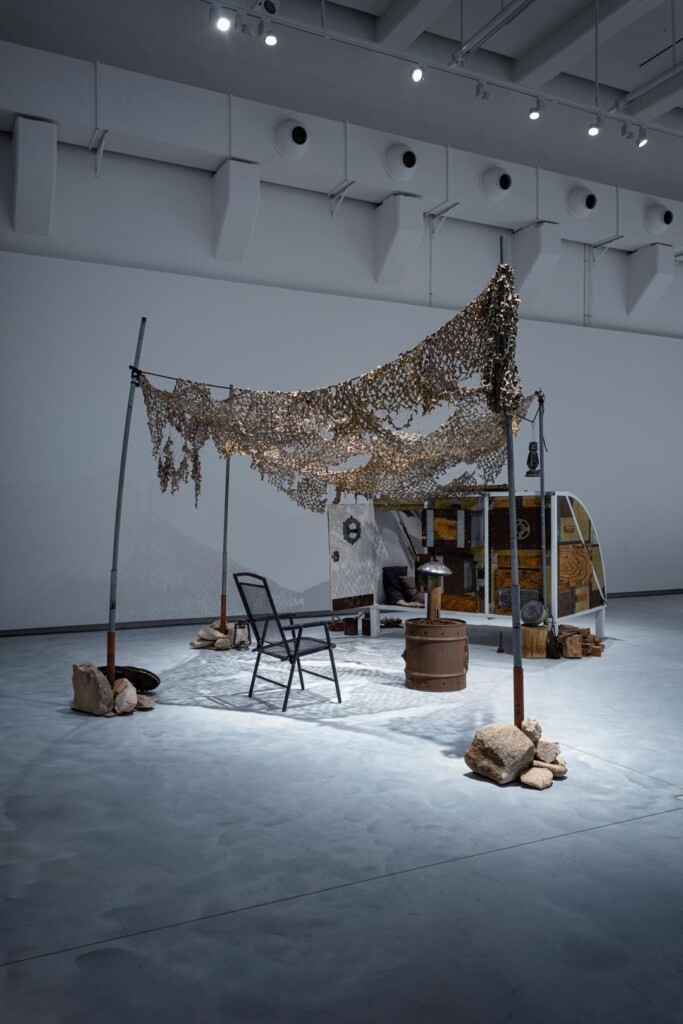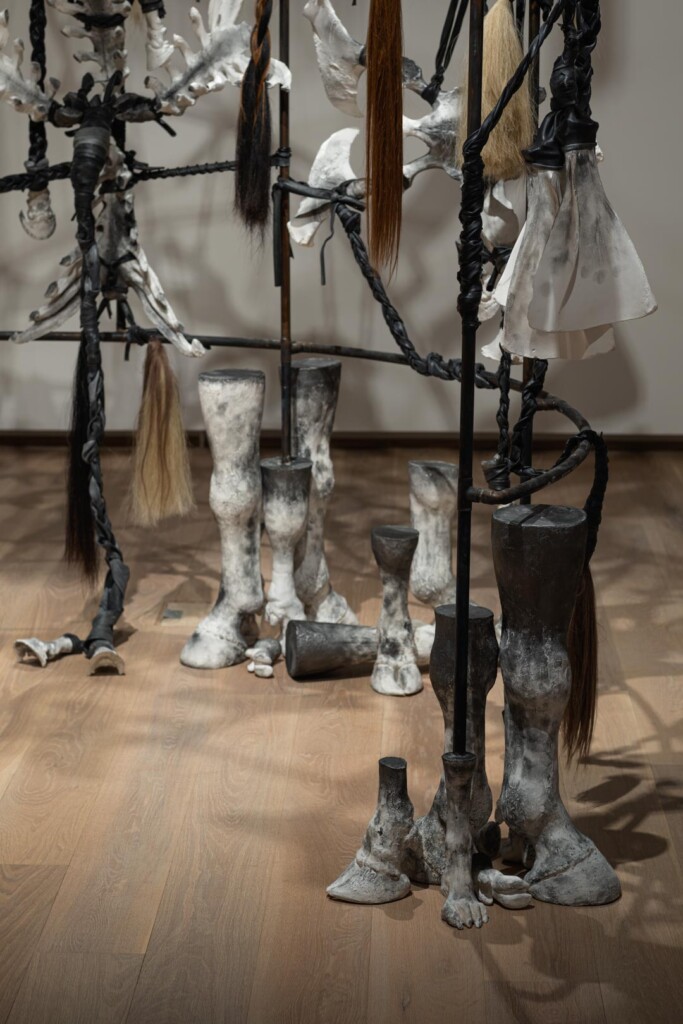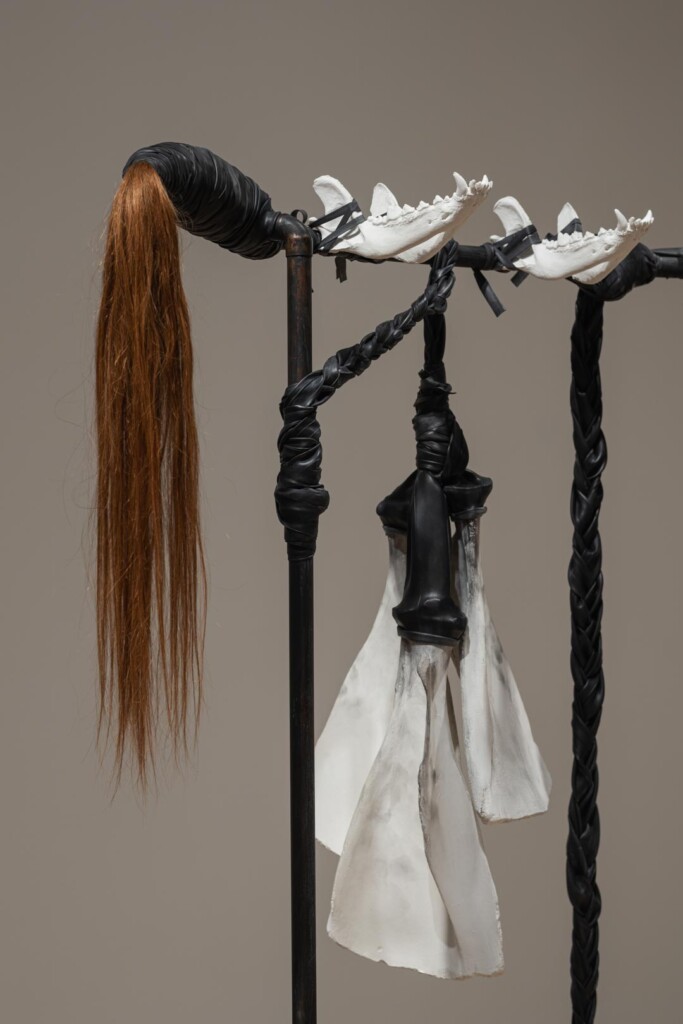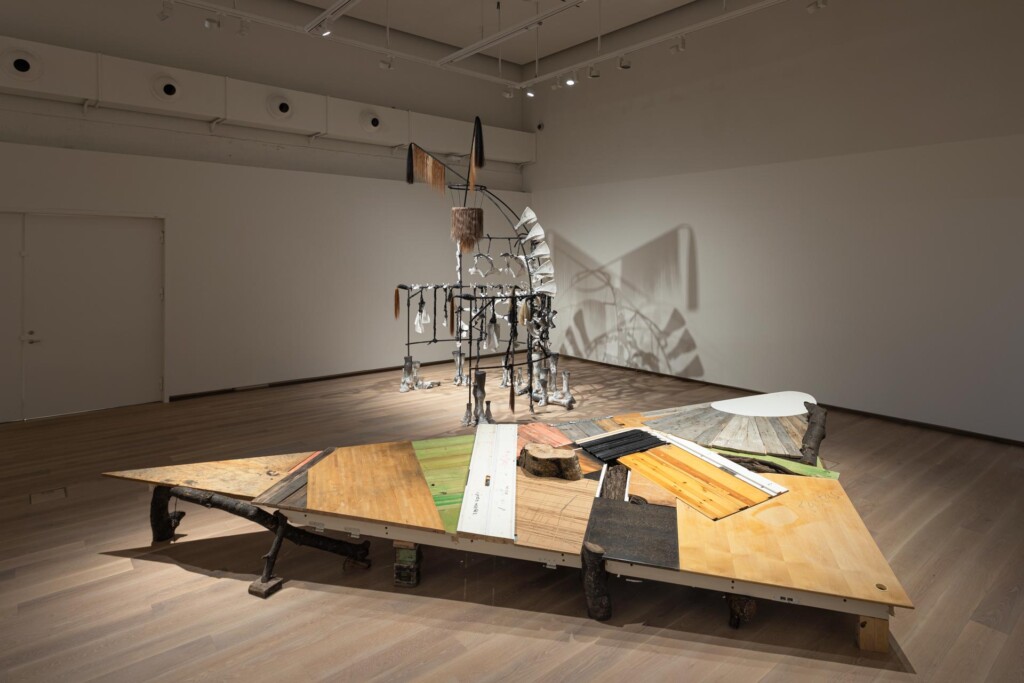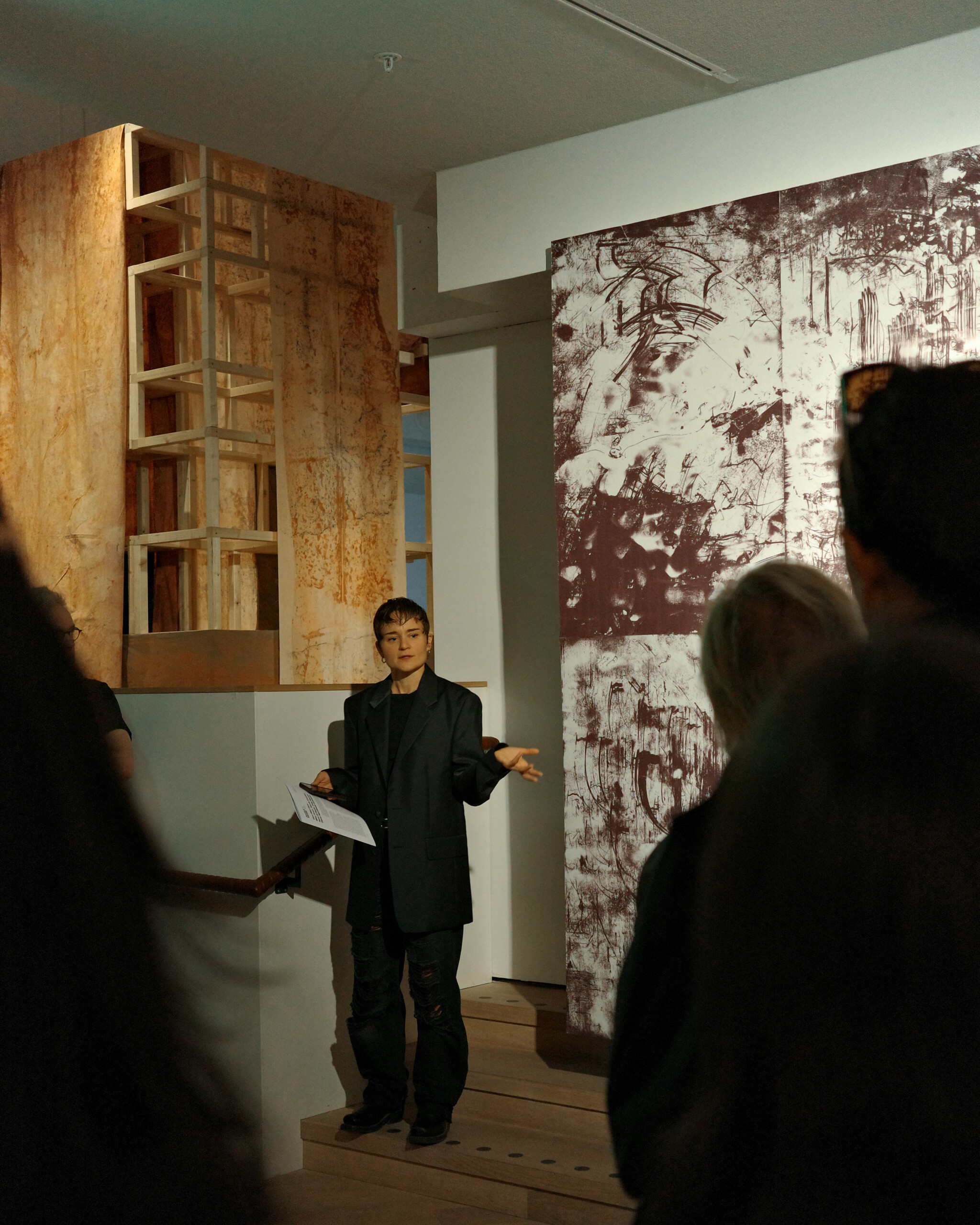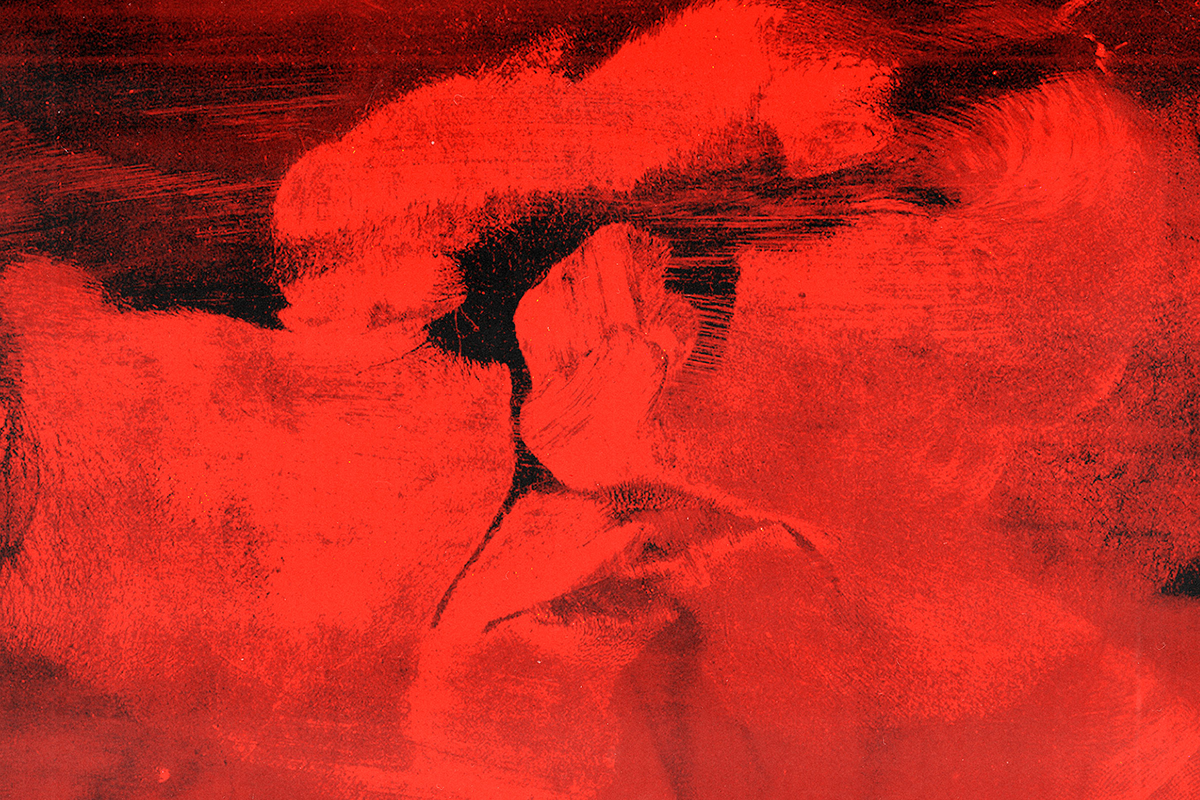How can art explore future scenarios for new lifestyles, relationships to other species, to the earth and between humans? Established in 1816 on the site where Accelerator and Stockholm University are located, the Experimental Field was an experimental agricultural science research activity that aimed to develop Sweden’s agriculture. The eponymous exhibition presented eight contemporary art practices that experiment with issues pertaining to the major challenges of our time. Taking its starting point in history, the exhibition The Experimental Field highlighted and fostered discussions based on the experimentation taking place in contemporary art and science today.
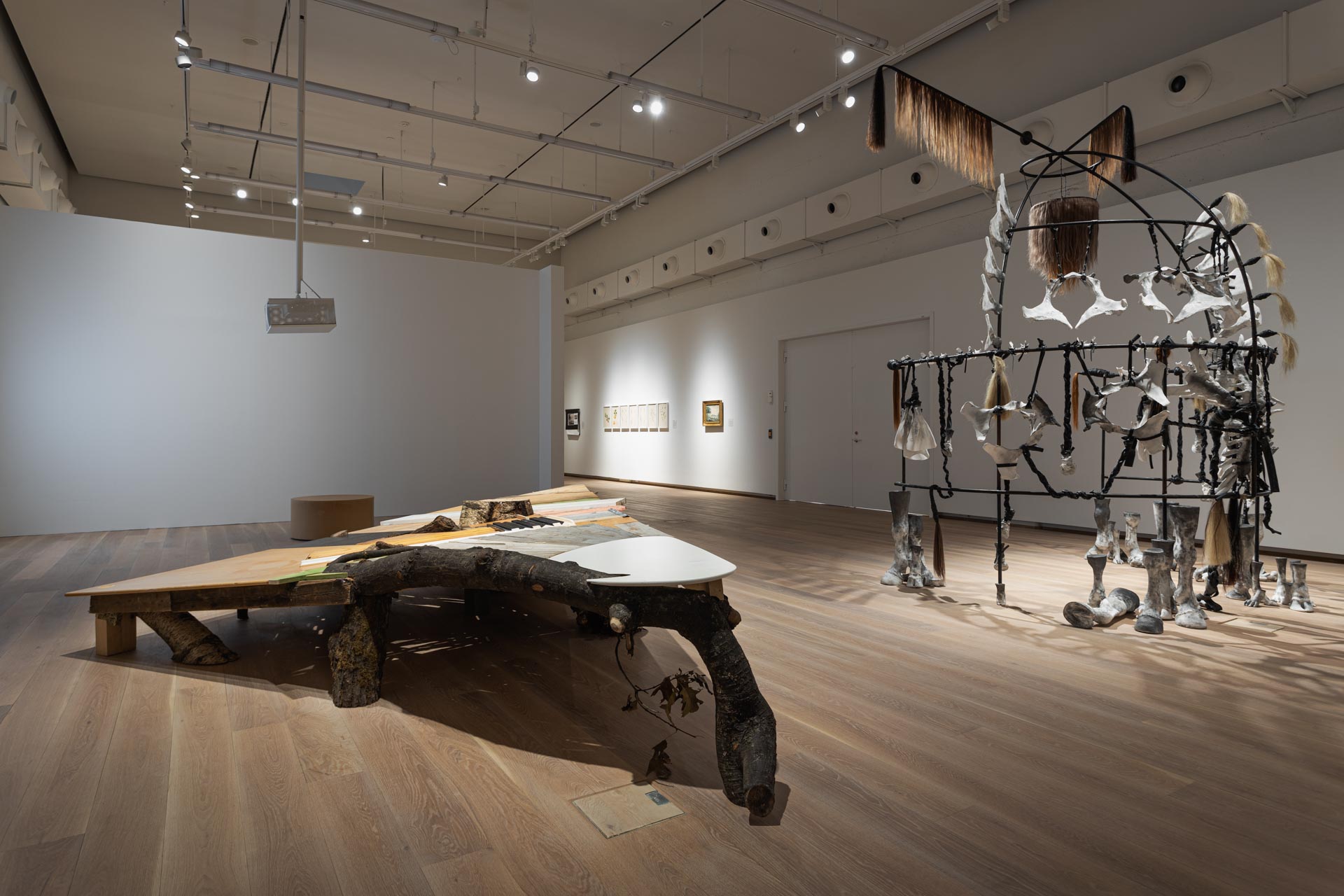 Installation view from the exhibition “The Experimental Field” at Accelerator 2021. Photo: Christian Saltas.
Installation view from the exhibition “The Experimental Field” at Accelerator 2021. Photo: Christian Saltas.
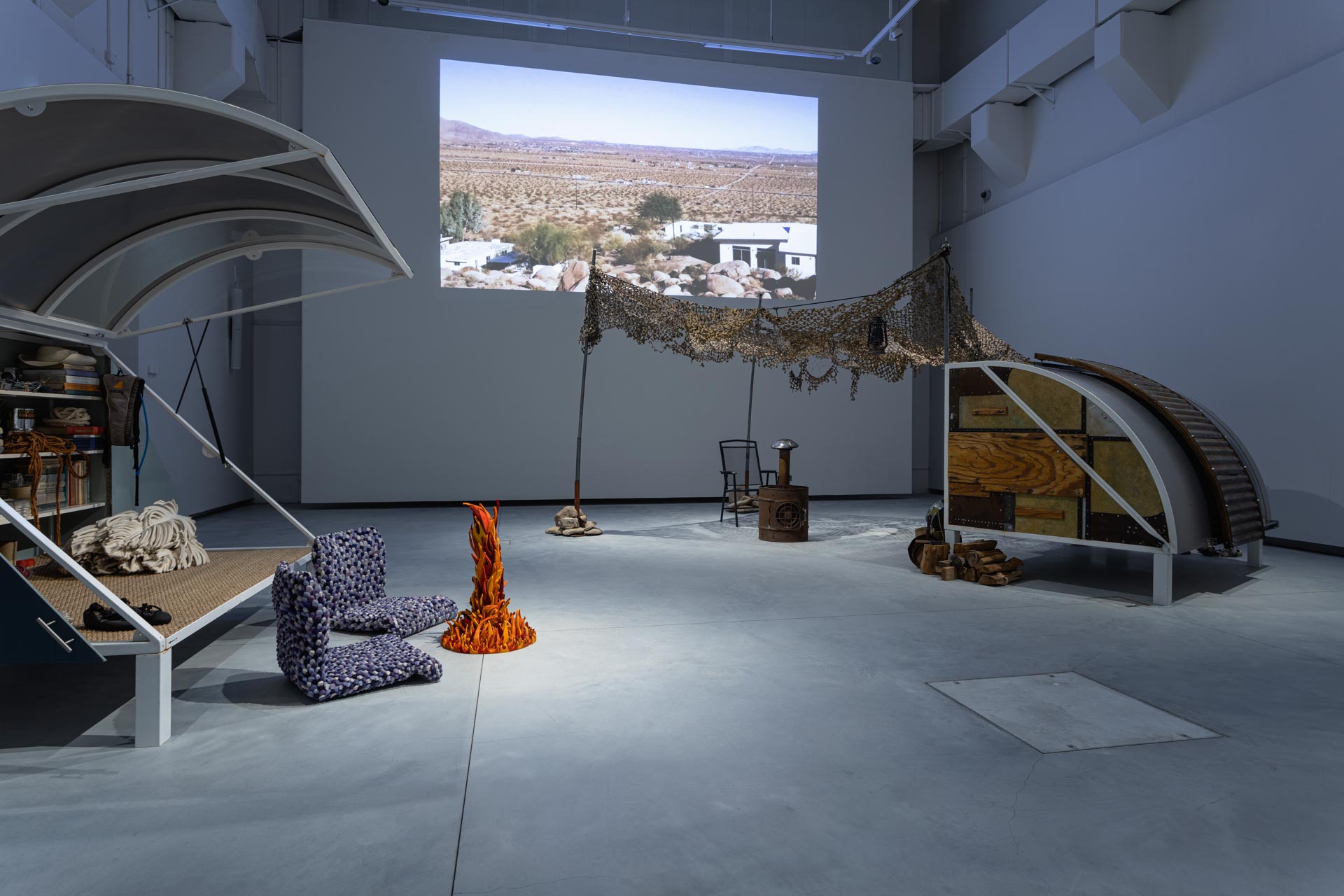 Installation view from the exhibition “The Experimental Field” at Accelerator 2021. Photo: Christian Saltas.
Installation view from the exhibition “The Experimental Field” at Accelerator 2021. Photo: Christian Saltas.
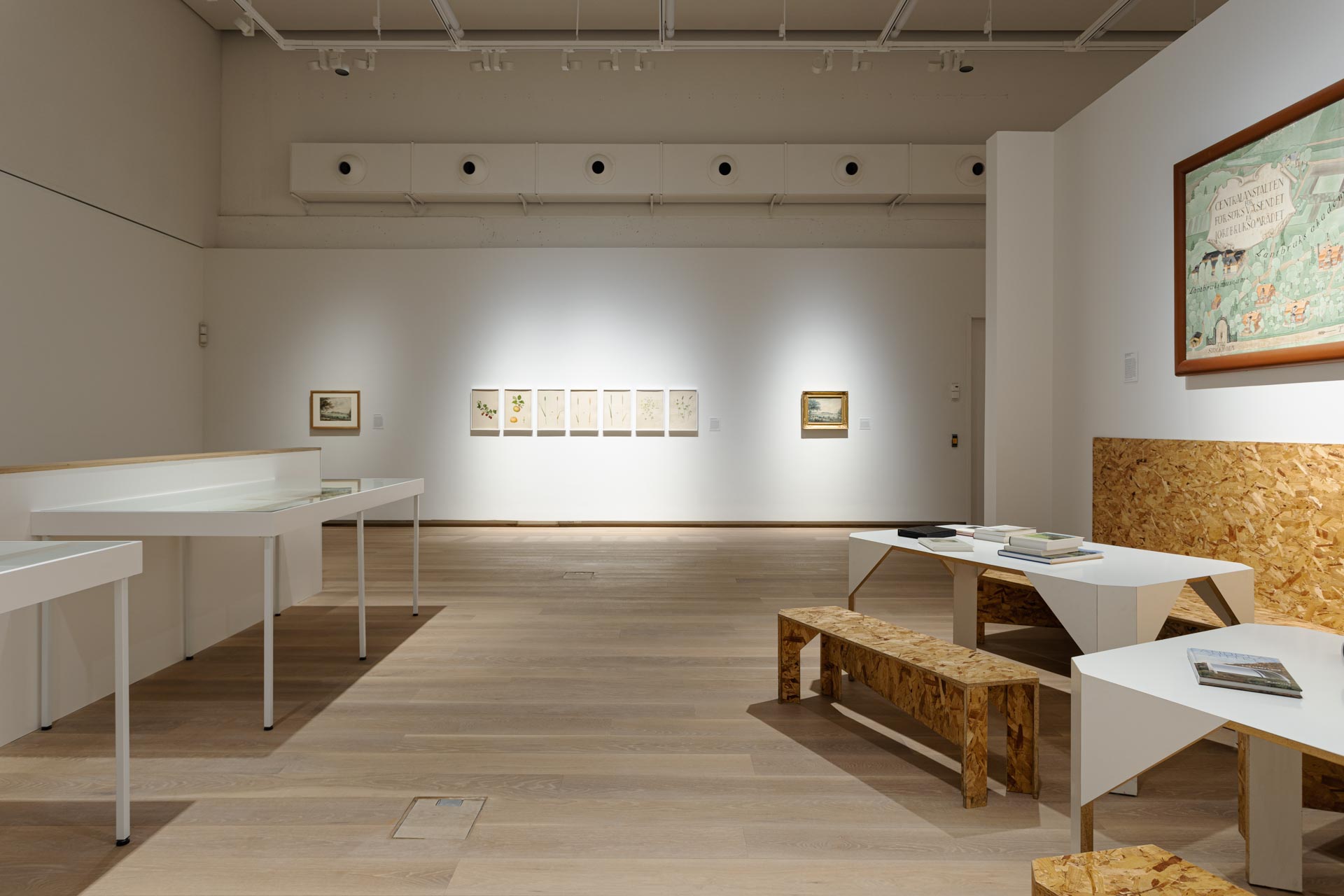 Installation view from the exhibition “The Experimental Field” at Accelerator 2021. Photo: Christian Saltas.
Installation view from the exhibition “The Experimental Field” at Accelerator 2021. Photo: Christian Saltas.
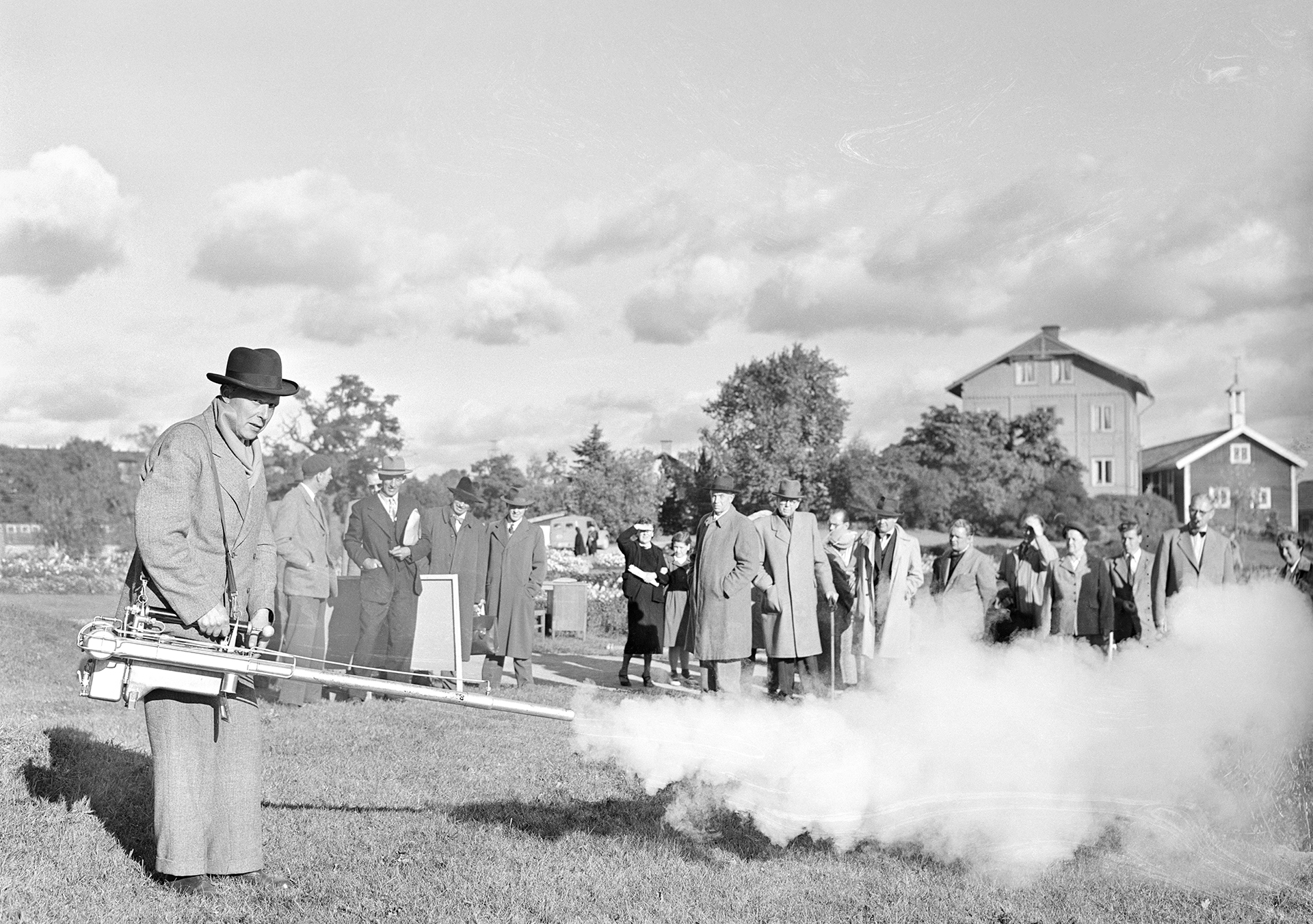 Documentary photograph taken at The Experimental Field in 1954. Courtesy of Stockholm City Museum, photo: Herman Rönninger SvD 34678.
Documentary photograph taken at The Experimental Field in 1954. Courtesy of Stockholm City Museum, photo: Herman Rönninger SvD 34678.
On the works in the exhibition
The majority of the works in The Experimental Field have been created specifically for the exhibition and are displayed alongside loaned historical objects. All of the contemporary works possess performative qualities; organised meetings and conversations will be initiated with visitors, and installations will become sites for various types of rituals. The exhibition addresses ideas concerning non-hierarchical relationships to other species and nature in general. Experimentation as a basic prerequisite for creation permeates the art practices presented and the series of public discussions in which researchers at Stockholm University participate.
The exhibition presents eight contemporary art practices: Andrea Zittel explores what we need in order to survive.Signe Johannessen investigates trans-species relationships between humans and domesticated animals throughout history, while Åsa Elzén and Malin Arnell explore our mutual dependence on forests. In collaboration with The non existent Center, the group O highlight the need for organised social activities in a work based on the subversive power of empathy. Furniture designed by Uglycute constitutes a site in the exhibition for study and contemplation. As part of Accelerator’s Art + Research programme, the art and agricultural collective Kultivator are creating a process-based work in collaboration with cultural working worms.
The exhibition includes works loaned from Magasin III Museum for Contemporary Art, historical works and archive material from the Royal Swedish Academy of Agriculture and Forestry, Stockholm City Museum and Nationalmuseum, Stockholm.
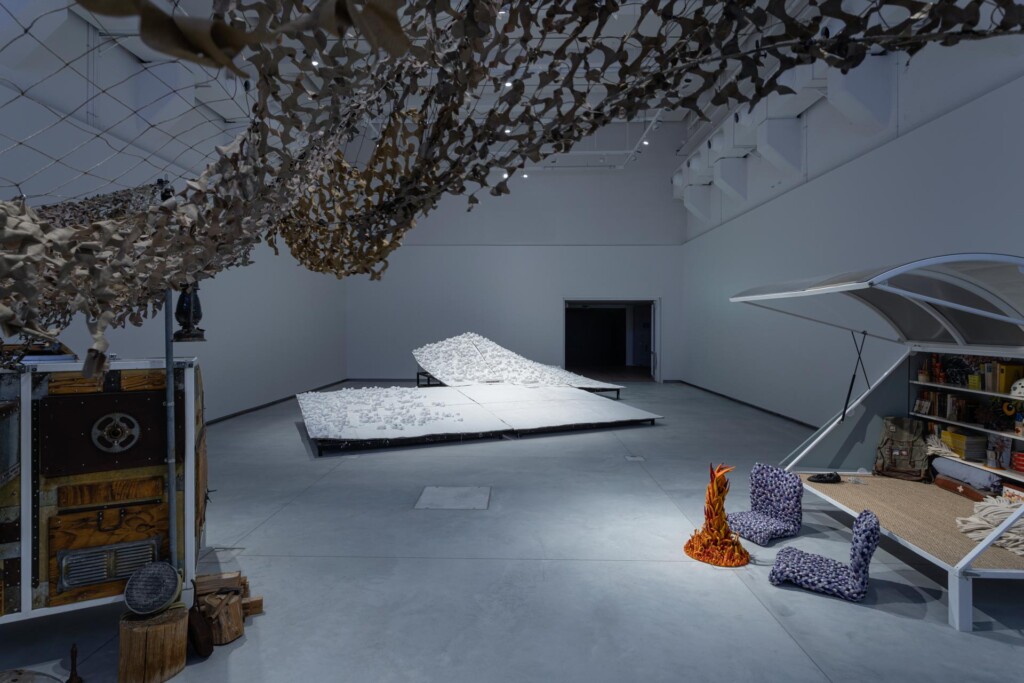
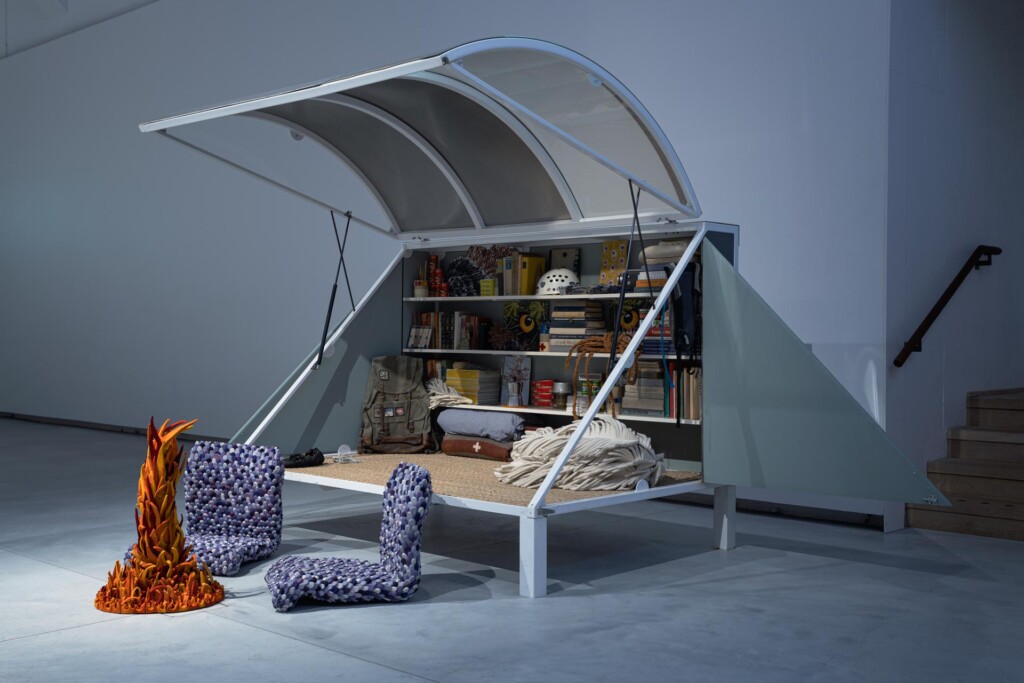
Andrea Zittel
Lay of My Land, 2011
A-Z Wagon Stations, 2003
Sufficient Self, 2004
American artist Andrea Zittel lives in the Mojave Desert, California. As an artistic strategy, Zittel has named the place where she lives A-Z West and she regards all parts of her daily life as elements of her art. In the exhibition The Experimental Field Zittel displays the sculptural installation Lay of My Land which is a topographical model of A-Z West. One of the many artistic strategies Zittel employs is to create objects for others to use. One such experiment on display in the exhibition is the Wagon Stations: sleeping outdoor pods for overnight stays on the A-Z West property. Andrea invited friends to adapt them to their own needs. After eight years in the desert the Wagon Stations were transformed into art objects and incorporated into various art collections. On the rear wall of the exhibition space a projection alternatively shows a live stream from A-Z West and the work Sufficient Self, in which Andrea Zittel describes A-Z West and her life in and around the city of Joshua Tree.
Andrea Zittel“I still love the desert. I love that it is difficult and that it doesn’t cater to humanity. It’s so beautiful here but at the same time it’s very harsh, and I have to admit that sometimes I feel beaten down by it. ”
Signe Johannessen
Posthumous Dialogue, 2020
Puppy Play, 2020
Swamp Posthumous, 2021
Upon descending into Accelerator’s underground spaces, the visitor will be met by scenes from a dusky forest. In Johannessen’s film Puppy Play, children play families with an Irish Wolfhound. During several experimental sessions of play, the artist has portrayed how this interspecies family communicate non-verbally and yet straightforwardly. The work springs from the artist’s interest in belonging, the limitations of biology, and long-term investigations in interspecies relations. It is also a work developed from two deeply personal experiences that coincided in time. Under dramatic circumstances Johannessen became mother to an infant whom she didn’t give birth to. Her own body responded immediately by starting to lactate. Simultaneously the artist’s dog gave birth to stillborn puppies. In these challenging circumstances the definition of family and belonging was radically expanded for the artist and her dog.
In Johannessen’s installation Posthumous Dialogue replicas of bones from domesticated animals and hair from humans and horses make up a sculptural altar piece that the visitor can enter. It serves as a site for rituals addressing an actual archaeological case of a multispecies body found outside Örebro in 1949. In the find, a middle aged woman’s body had parts of her body exchanged to specific bones from a dog, a cow, a pig and a horse. Together with archaeologist Christina Fredengren, Associate Professor at the Department of Archaeology and Classical Studies at Stockholm University, Johannessen will respond to this case in experimental dialogues and additions to the installation addressing what intellectual, physical, emotional and mystical fibers this case can contain. Johannessen’s work unfolds historical, scientific and personal narratives and explores possible connections, diffractions and echoes between them. A traumatic experience of cruelty towards animals in her childhood has been fundamental for the artist’s urge to correct or heal centuries of human atrocities towards other species. She investigates the corporal knowledge that is produced when inter-species bodies interact and collaborate which is often overseen in scientific contexts. Archives and museums are central sites of research and also the mise-en-scène of several of her artworks. The artist wishes to embrace the kinship and inter-bodily relations that often are lost in these scientific sites of posthumous bodies.
The film Swamp Posthumous is a further development of the work Posthumous Dialogue, and addresses the same archaeological find. In Swamp Posthumous, Johannessen unites with researcher Christina Fredengren and Cullberg dancers Agnieszka Sjökvist Dlugoszewska, Eszter Czédulás and Unn Faleide in a shared interest in hybrid bodies, the rewriting of history and our relationship to animals – those that walk the earth and the magical ones.
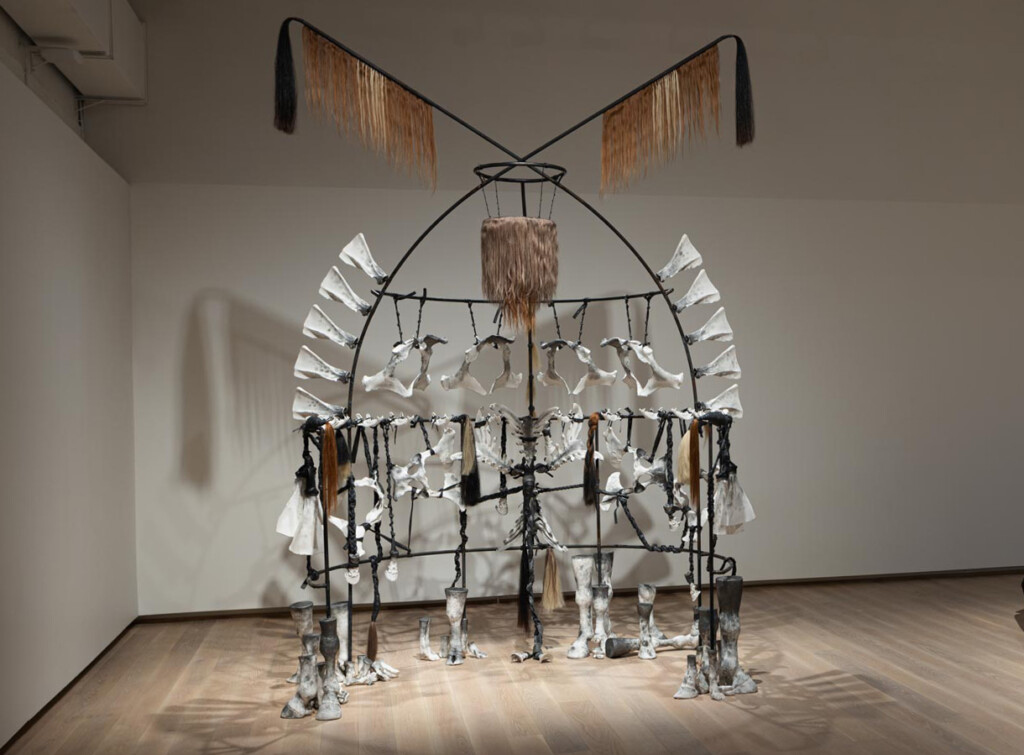
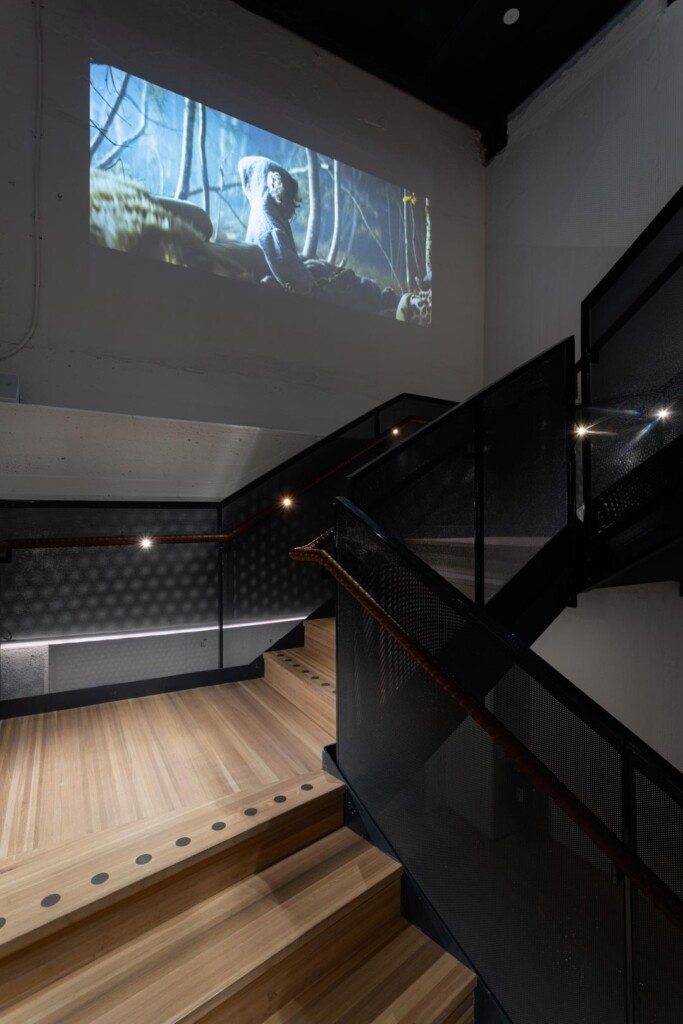

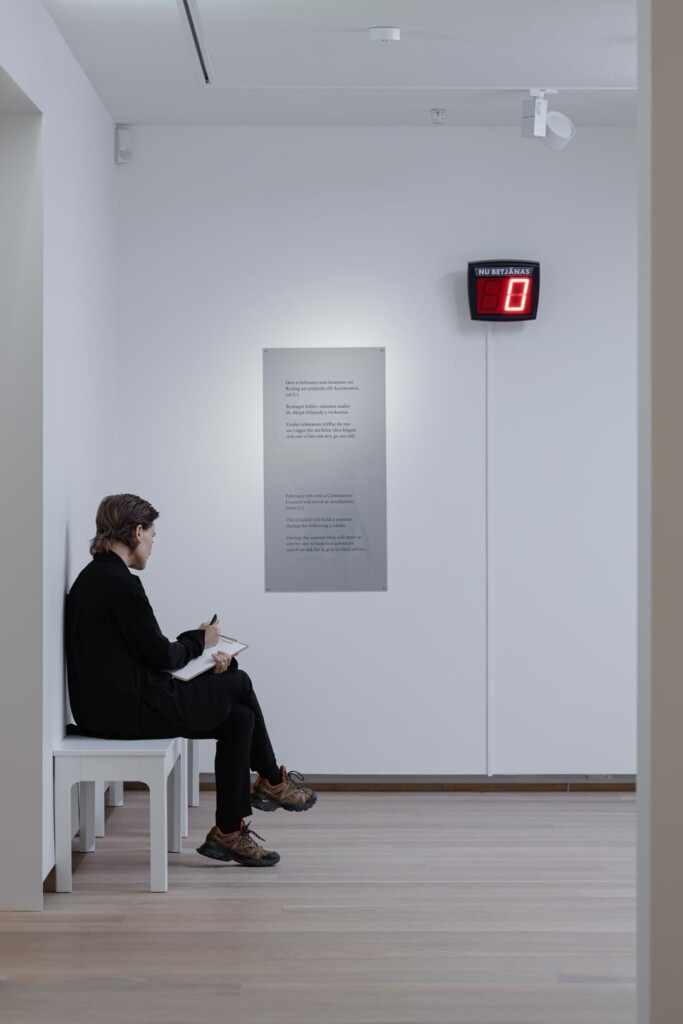
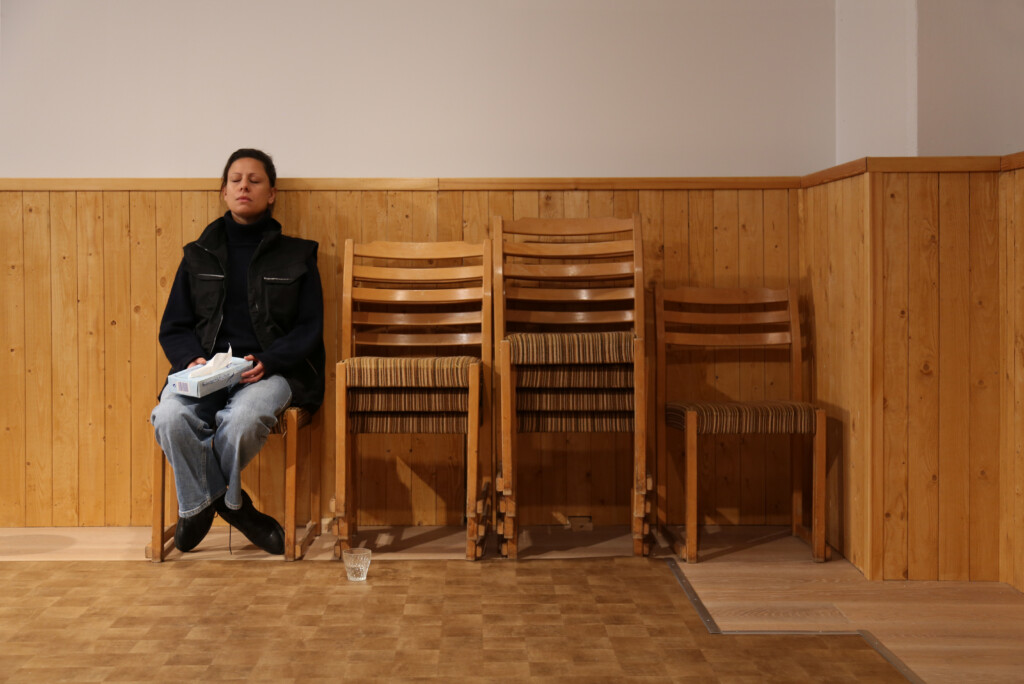

O in collaboration with The non existent Center
It takes a village, 2020-21
O is a new performance company, formed by the merging of the performance group Poste Restante and the performing arts duo Osynliga Teatern. Both groups have been treating the visitor as the protagonist in their work and this is also the prevailing idea in the work of O. After formulating a dilemma they establish a unique activity that can only exist within the framework of contemporary art. In a collaboration with The non existent Center, O’s very first work is now presented at Accelerator. It takes a village is a process-based work that gradually is populated and materialized during the course of the exhibition. In the work O explores ethical, aesthetic and moral issues of the perception of knowledge and the subversive power of mentalisation. In light of a political climate where rural and urban areas are often portrayed as polar opposites, they reformulate competence hierarchies and address issues of trust. Initially in the space an installation of a fragmented village community center is presented. Over time, the installation will consolidate and finally a village community committee will make themselves at home and run their activities from there. In Mars, the association will be ready to engage with visitors. The village community committee or ‘Byalaget’ offers advice to individual visitors within a personal encounter.
Would you like to meet the Community Council? Are you facing a tough decision? The Community Council (“byalag” in Swedish) met visitors in individual encounters Tursday–Sunday every week during the exhibition in order to listen, share their experiences and offer advice on small and major life issues.


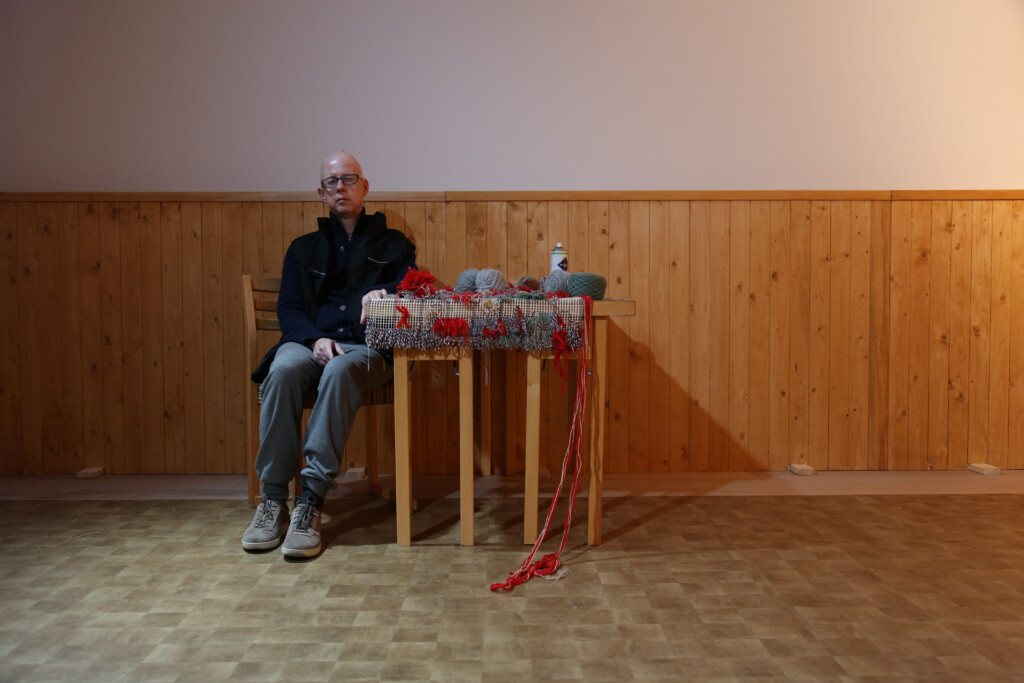

Åsa Elzén and Malin Arnell
Forest Calling – A Never-ending Contaminated Collaboration or Dancing is a Form of Forest Knowledge. Extension #2, 2020
Forest Calling – A Never-ending Contaminated Collaboration or Dancing is a Form of Forest Knowledge. Extension #2 is made of felled forest, tree branches and industrially processed wooden material from different epochs and origins. For a month, wood that was to be thrown away – from demolitions, refurbishments, waste and from the pruning of trees planted during the time of the Experimental Field – was collected at the university. The material of the sculpture testifies to its long use in the service of knowledge.The sculpture’s connection to the site is strengthened by the fact that it was created in the area formerly occupied by the Experimental Field. The work forms part of Arnell and Elzén’s joint exploration of forestry, the rights of nature, eco-social desire and sustainable relationships between species.
Indicated by the title, the work is a type of extension of the artists’ long-term process-based work Forest Calling – A Never-ending Contaminated Collaboration or Dancing is a Form of Forest Knowledge (2018 – ongoing). This public artwork comprises 3.7 hectares of forest in the form of a triangle. The artists are leasing the forest for 50 years, as a first step in taking it out of logging production. The forest was partly planted during the time when the Fogelstad Group was active on the site. The forest grows on the grounds of the Fogelstad Manor, the homestead of the group that was founded in 1921. By stopping the forest from being clear cut, the artists are attempting to safeguard it and allow the continuum from the Fogelstad Group to proceed. The artists forcefully disrupt the temporality and release the forest from the anthropocentric profit-driven motivations of the forestry industry that it is part of today. The proportions of the sculpture presented at Accelerator are based on the triangular form of the forest. In the autumn, the public will be invited to visit and spend time in the forest. For more information go to the Accelerator calendar.
Read more and listen to “Forest Calling” at Public Art Agency Sweden.
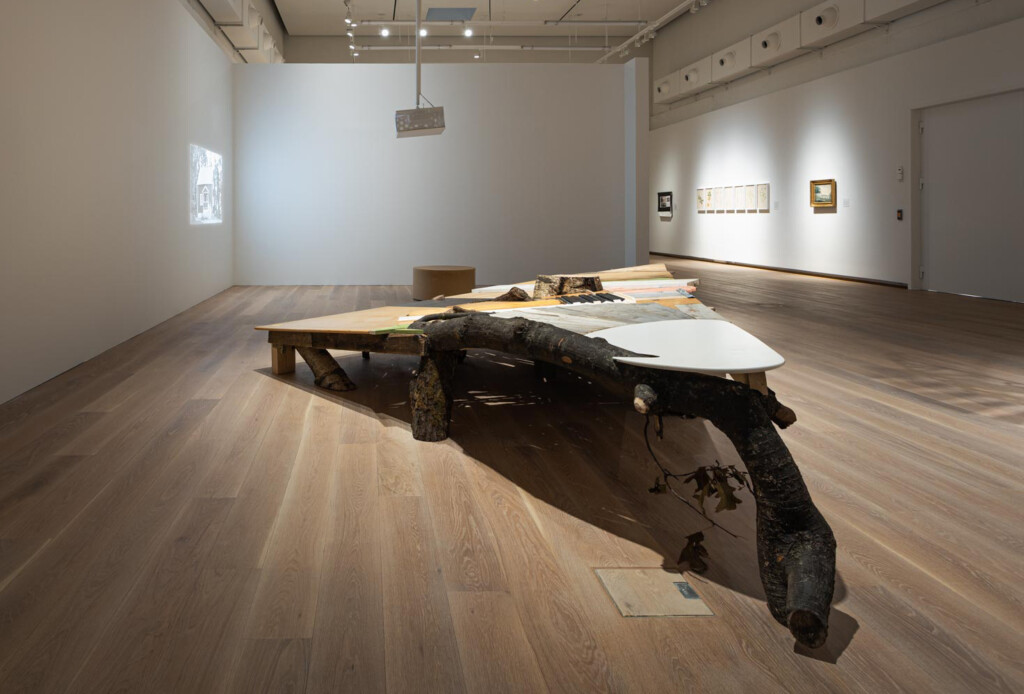
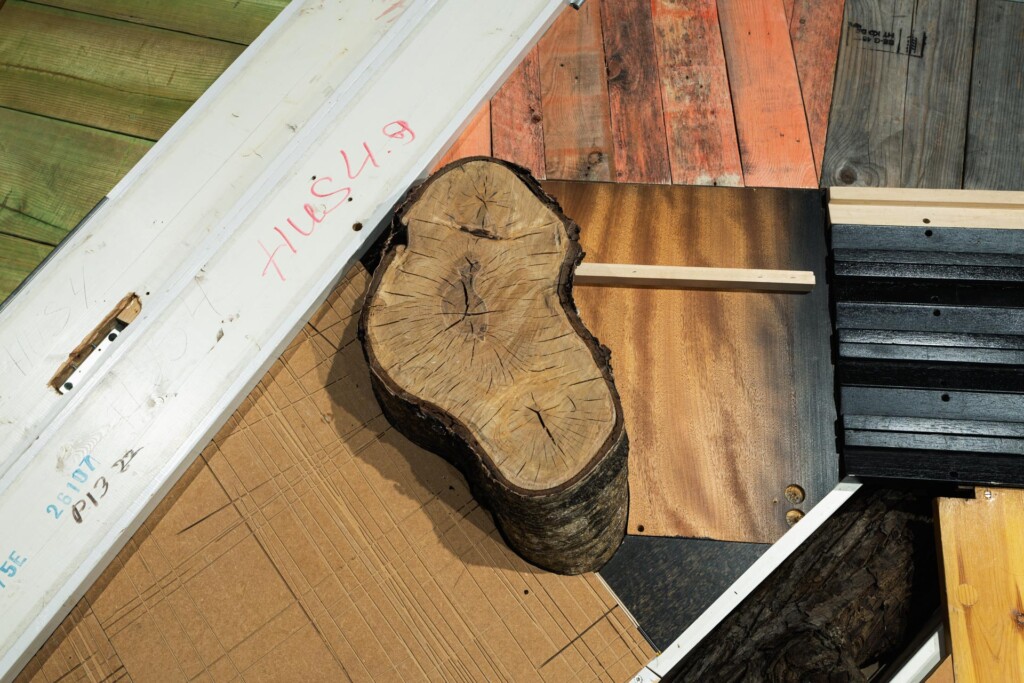
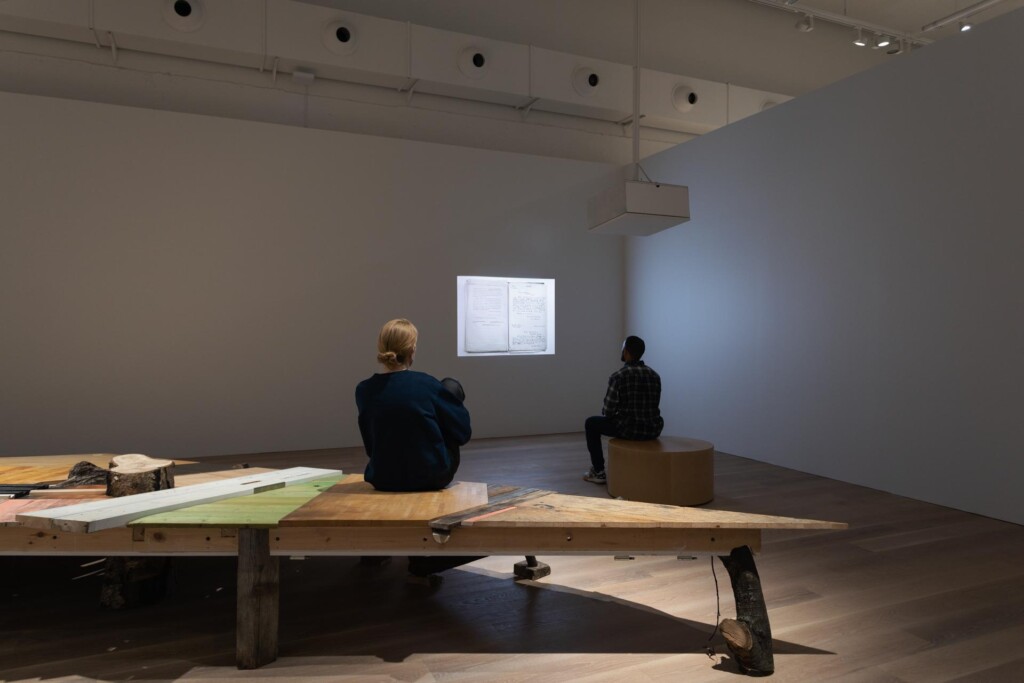
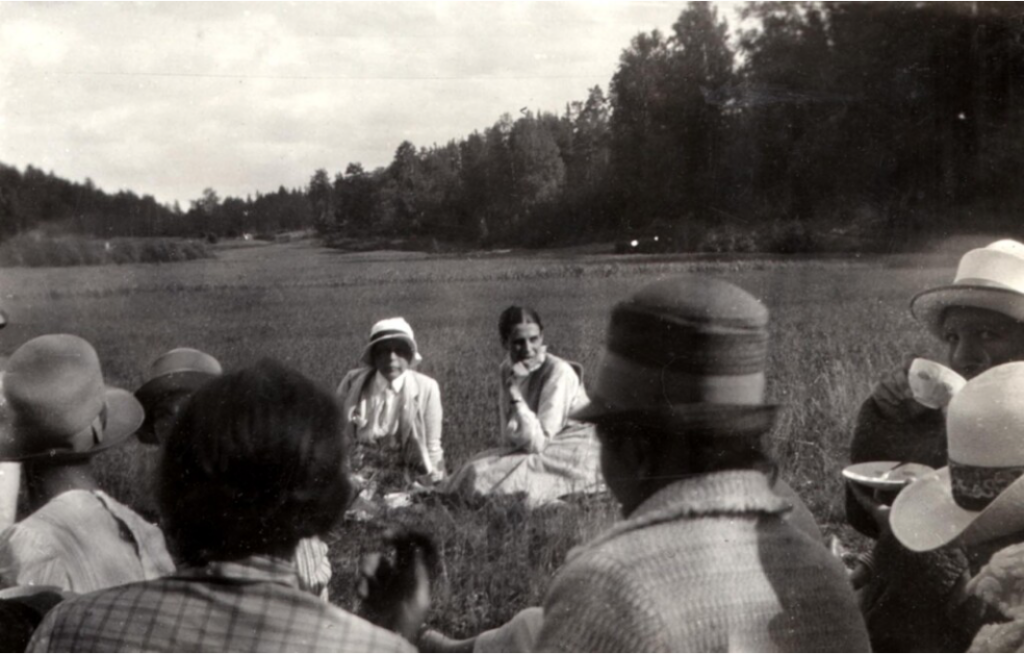
Åsa Elzén
Why do things when you could leave it?— An attempt, an in-between land, 2019
Åsa Elzén has long worked with the legacy of the Fogelstad Group, which, among other things, ran the Women Citizen’s School at Fogelstad (1925–54) in Julita, Sörmland. The school was founded by landowner, suffragette and Member of Parliament, Elisabeth Tamm. Elzén has primarily been concerned with the Fogelstad Group’s commitment to ecology and land issues. Active at a time that saw the emergence of industrial agriculture, the group were extremely critical of of what they saw coming. They believed our relationship to the earth should be based on love and care rather than ownership. Tamm wished to change the forms of land ownership as she believed that the right of ownership could expose the land to speculation and exploitation. Elzén’s archival research reveals how Tamm donated part of her estate to the state, to enable the practice of “åborätt” which is a kind of hereditary and transferable land tenancy. This was Tamm’s alternative to traditional ownership and lease holding. The film depicts how a visionary desire to change a system from within encounters the authorities’ rigid formalities, bureaucratization and human prioritization of self-interest.
Uglycute
Interior created for Project Djurgårdsbrunn, 2002
Furniture designed by the artist and architect collective Uglycute constitutes a contemplative site in the exhibition where visitors can browse literature and documents related to the exhibition’s theme. Uglycute currently comprises of architect Fredrik Stenberg and artist Jonas Nobel. The group was originally co-founded by interior designer Andreas Nobel and artist Markus Degerman. The group have created objects, exhibitions, films and taught in the interface of art, design and architecture. The furniture in The Experimental Field was created by Uglycute in 2002 for the contemporary art museum Magasin III’s Project Djurgårdsbrunn, an exhibition during the summer months of 2002-2005 at the former Djurgårdsbrunn’s restaurant premises in Stockholm.
Watch Fredrik Stenberg och Jonas Nobel of Uglycute in a conversation with Accelerator’s artistic director Richard Julin about experimentation, team-working, taste hierarchy and much else.
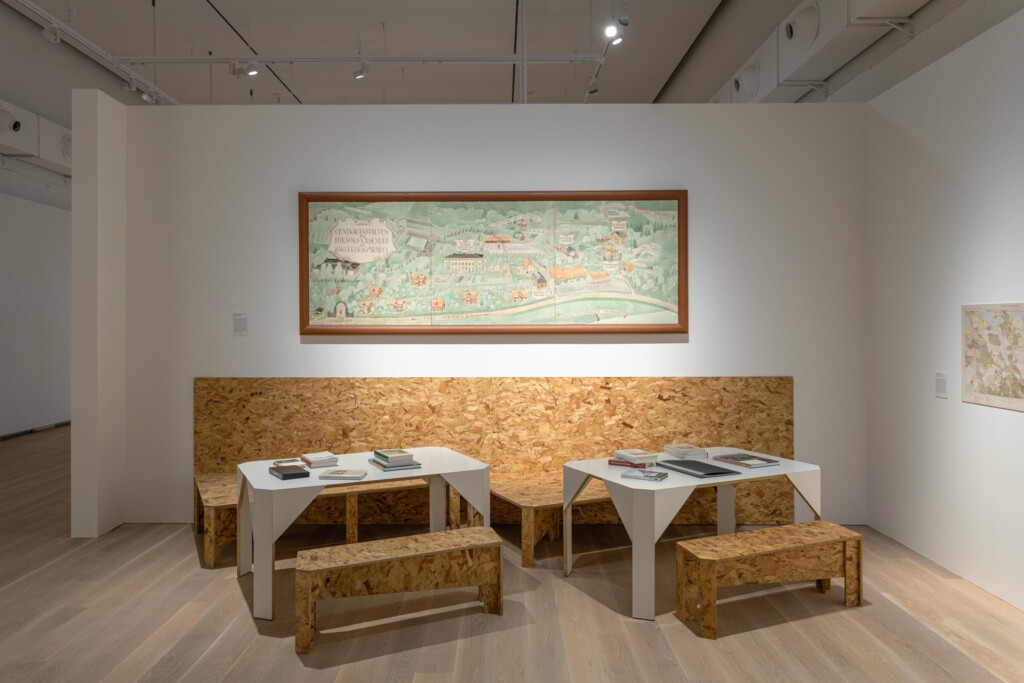
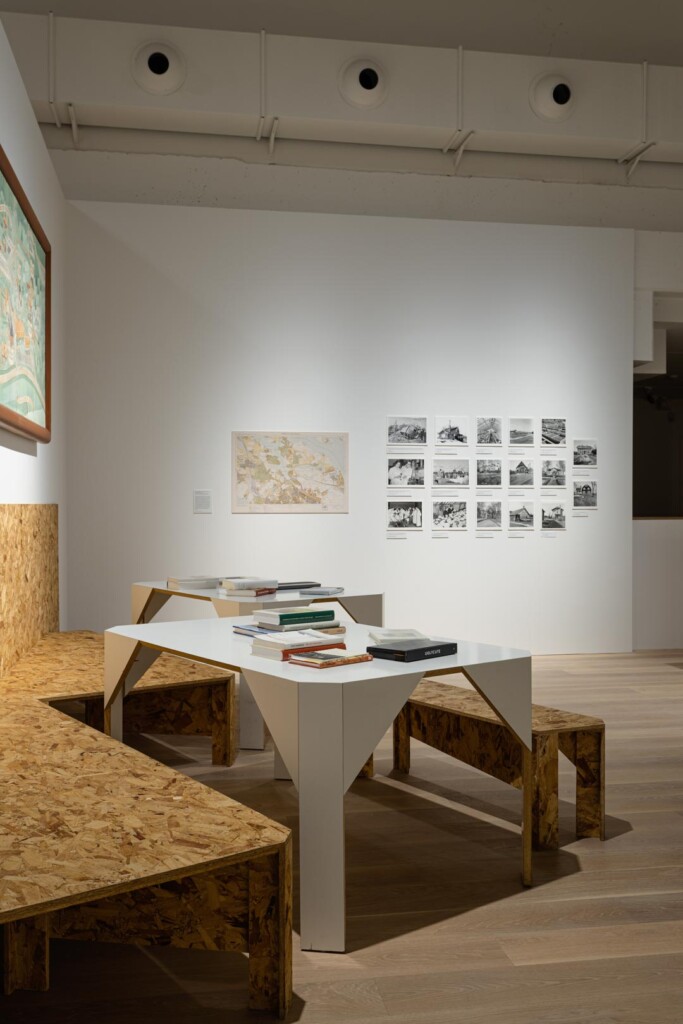
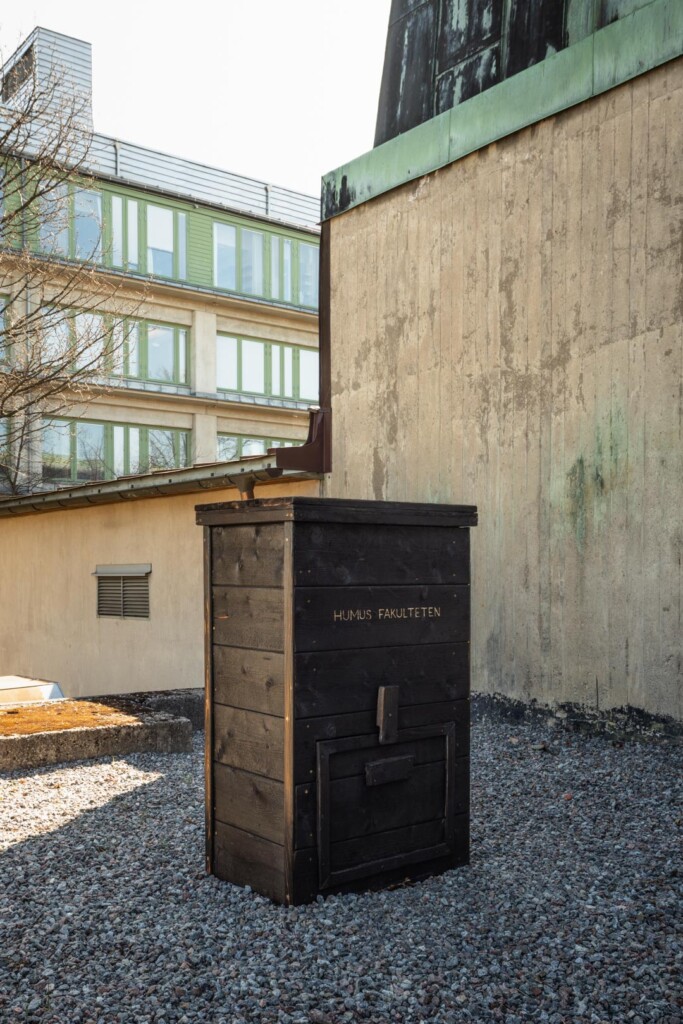
Kultivator
Soil Faculty, 2020
Kultivator is an experimental cooperation of organic farming and visual art practice situated in the rural village Dyestad, on the island of Öland. Their work for The Experimental Field is a process-based work in the form of a living worm faculty, installed outdoors on Accelerator’s terrace. For the duration of the exhibition the worms are invited as cultural workers processing scrap paper and fruit waste from Accelerator’s staff room. As the organic matter decomposes new humus is created. Inside the institution the Soil Faculty becomes its own cultural producer, generating a foundation for other activities: top soil, the planet’s tenuous utmost cultural layer. In collaboration with Kultivator the worms presented their work at the Soil Symposium in May 2021 and their precious produce will be distributed in the former grounds of the Experimental Field. As an Accelerator Art+Research commission their work will cultivate cross-disciplinary dialogue between artists and researchers addressing the matter, memories and futures of soil.
The History of Frescati and The Experimental Field
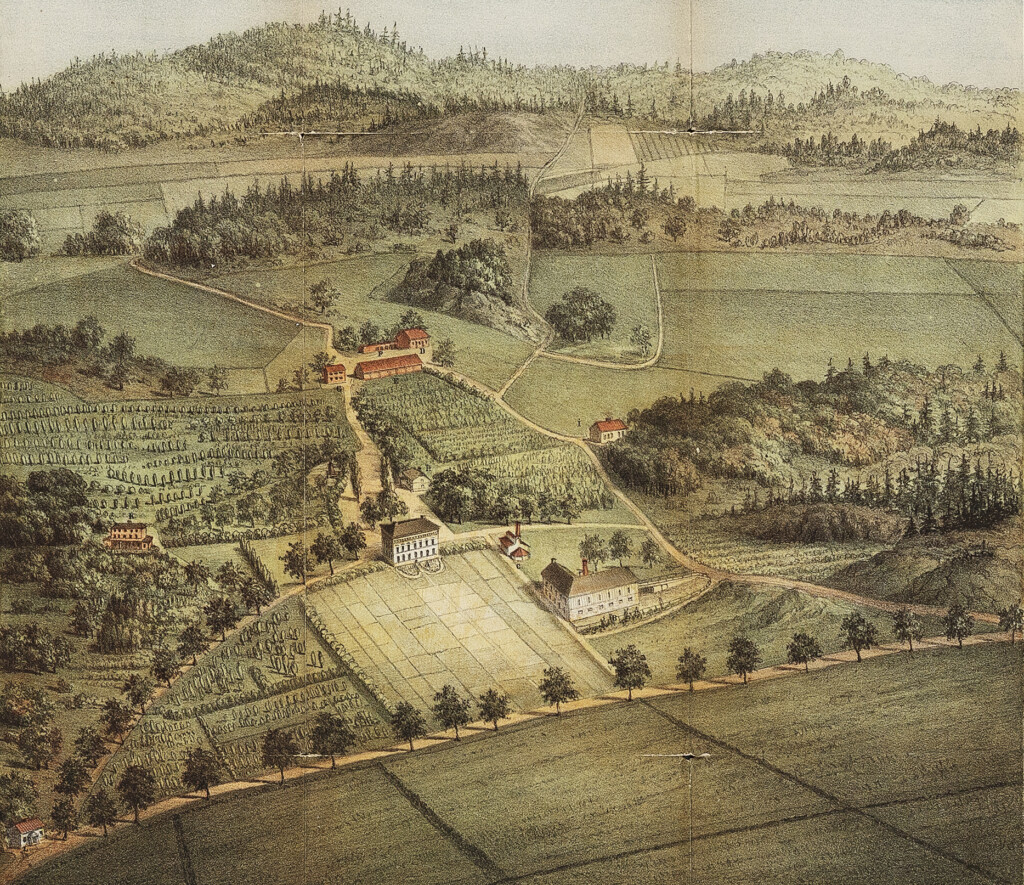
Long before it became part of the Stockholm University campus, Frescati was a place for research and experimentation. Initially a Royal hunting ground and then a centre for agricultural and physical experiments, the area has also housed a retail plant nursery and an agricultural museum.
In the late 18th century, interest in agriculture grew among landowners and an educated upper class was interested in how agriculture could provide economic gains. Europe saw many developments in agriculture, including agrarian reforms, new machines and tools. Agricultural sciences emerged as a new discipline of natural science, and in 1816 the Royal Swedish Academy of Agriculture established the Experimental Field at Frescati.
In conjunction with the establishment of the Experimental Field, an experimental farm was founded as well as a model farm that would finance the research activities. Modern tools in accordance with new, international models and the introduction of crop rotation were indispensible for the model farm. On the experimental side numerous experiments were carried out and departments of agricultural chemistry and plant physiology were instituted. Oats, root vegetables, berries and garden plants were cultivated and various breeds of cows and sheep were introduced, primarily from Great Britain and Germany, in order to study growth and milk production in relation to domestic breeds.
In the 1940s, the Experimental Field’s agricultural research activities were transferred to the Ultuna University of Agricultural Sciences, which later formed part of the Swedish University of Agricultural Sciences, SLU. The few buildings that remain today from the Experimental Field are now used by the university.
The historical part of the exhibition at Accelerator includes photographs, paintings, illustrations and drawings from the Experimental Field’s 150-year history.
List of Historical Works and Objects in the exhibition “The Experimental Field”.
Researcher collaborations
Accelerator’s exhibition The Experimental Field is developed in collaboration with researchers at Stockholm University, who will also contribute to a series of public discussions in the autumn.
Credits
Participants in the exhibition:
Malin Arnell, Artist
Åsa Elzén, Artist
Signe Johanessen, artist
Kultivator, Artist Collective
O in collaboration with The non existent Center, Artist Collective
Uglycute, Art and Architecture Collective
Andrea Zittel, Artist
Exhibition Team Accelerator
Richard Julin, Curator
Therese Kellner, Curator
Tove Nilson, Communications Manager
Anna Wallgren, Communications Officer
Erik Wijkström, Exhibition Technician
Communications Officer, Anna Wallgren
Bronwyn Bailey-Charteris, Researcher Collaborations Project Leader
Emma Järnwall, trainee
Madeleine Kozma, trainee
Elina Lund, trainee
Thank you:
Magasin III Museum for Contemporary Art
The Royal Swedish Academy of Agriculture and Forestry
Stockholm City Museum
Nationalmuseum
Malin Arnell and Åsa Elzén
Artists: Malin Arnell, Åsa Elzén.
Production: Malin Arnell, Åsa Elzén, Mar Fjell, Lisa Gerholm.
The Artists Wish to Thank: Waste Disposal at Stockholm University, the Bergius Botanic Garden, the Department of Molecular Biosciences, the Wenner-Gren Institute, Public Art Agency Sweden.
Åsa Elzén
Speaker Voice and Text Processing: Nik Persson.
Recording: Mattin.
With Support From: The Swedish Arts Grants Committee, the Swedish Visual Arts Fund.
The Artist Wishes to Thank: Kulturföreningen Fogelstad.
Signe Johannessen
Posthumous Dialogue: The installation has been realised through a collaboration with Erik Rören. Thanks also to Jessica Wiklund, assistant. Many thanks to Christina Fredengren for the ongoing dialogue!
Puppy Play: Thanks to the crew who worked on the production: Cameraman: Helge Olsén. Editing: Helge Olsén and Peter Olsén. Sound: Peter Olsén.
Swamp Posthumous: The participants were researcher Christina Fredengren, Cullberg dancers Agnieszka Sjökvist Dlugoszewska, Eszter Czédulás and Unn Faleide. Film, photo, sound edit, text & editing by Herman Nygren and Oskar Hökerberg, Team Tony/Character, Felize Nilsson and Kristina Sigurdsdotter. Produced by Accelerator, Explorations of Now and Cullberg with support by Postkodstiftelsen.
The Artist Wishes to Thank: Jazzi and Milo and Syrran the dog. And Aloki Wadhia, Tulsi Wadhia and Soma Wadhia.
O+The non existent Center
Concept: Linn Hilda Lamberg, Eric Sjögren.
Film: Tomas Rajnai, Gustav Ågerstrand.
Producer: Sofia Jonsson.
Participants: It Takes a Village is a co-production between O, The non existent Center and Accelerator.
With Support From: Stockholm City, Region Stockholm, the Swedish Arts Council, The Swedish Arts Grants Committee.
